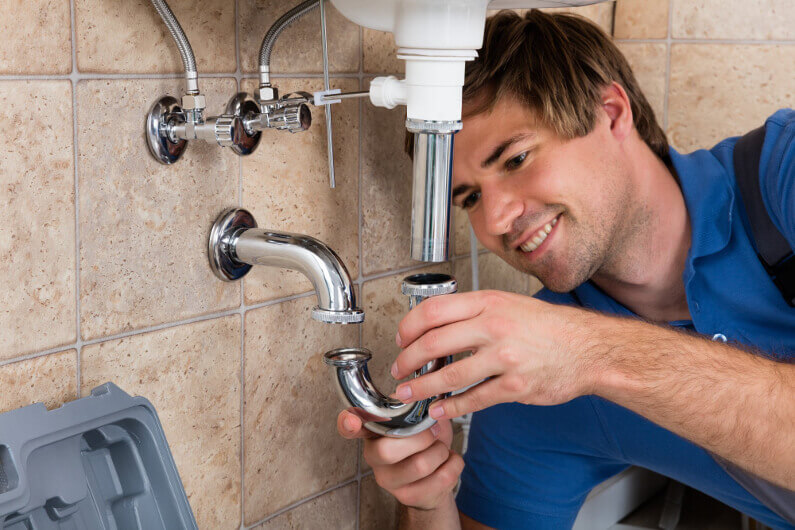A Detailed Overview to Reliable Hot Water Heater Installation for Optimal Performance
Beginning on the task of mounting a water heater is an endeavor that requires accuracy and a systematic approach for accomplishing ideal efficiency. As you proceed, the intricacies of attaching water supply lines and setting up trusted electric or gas links wait for, encouraging understandings right into guaranteeing effectiveness and dependability.
Selecting the Right Hot Water Heater

Next, consider the size and capability of the water heating unit. It's essential to analyze your house's warm water requirements, which can vary based on the number of residents and their use patterns. An unit that's too little might result in insufficient warm water, while an extra-large design could cause unneeded energy usage.
Efficiency rankings likewise play a crucial role in choice. Search for water heating systems with high Power Factor (EF) rankings, suggesting premium efficiency and lowered energy usage. Tankless models, though normally more costly ahead of time, deal considerable power cost savings gradually due to their on-demand heating capabilities.
Preparing the Installation Location
Before mounting a brand-new water heating system, thorough preparation of the installation location is essential. It's crucial to measure the area carefully to fit the water heater's dimensions, making certain appropriate clearance around the unit for effective procedure and servicing.
Next, get rid of any kind of particles, dust, or blockages from the site to create a clean setting. Inspect the flooring for stability, as the hot water heater will certainly need a strong, level surface to run effectively. If necessary, mount a drip frying pan underneath the system to capture possible leaks or spills, preventing water damages to the surrounding area. In regions prone to seismic activity, consider setting up seismic bands to safeguard the heating unit firmly in position.
Additionally, make sure that all required tools and materials are on hand before commencing the installation. This includes items such as wrenches, screwdrivers, a degree, and any kind of additional equipment needed for securing the heater and installing. A well-prepared setup area sets the foundation for a successful water heating unit setup, maximizing efficiency and safety.
Connecting Water System Lines
When connecting supply of water lines to your freshly mounted hot water heater, it is essential to make sure that all connections are secure and leak-free to maintain reliable procedure and prevent water damages. Begin by identifying the cold and warm water system lines. The cold water inlet is typically noted with a blue tag or a "C", while the warm water outlet is noted with a red tag or an "H".
Usage adaptable water heater connectors to assist in a less complicated setup process. Before affixing the connectors, put a plumber's tape around the threaded ends of the water heating unit's inlet and outlet pipes.
Once connections remain in place, slowly turn on the major water shutoff. Evaluate each link for leakages by visually feeling and checking for wetness. Tighten links as necessary, and ensure the pressure safety valve is appropriately mounted, guarding versus too much stress build-up.
Establishing Electric or Gas Connections
Effectively setting up the electrical or gas connections for your water heating unit is a vital Recommended Site step to guarantee reliable and safe operation. For electric water heating systems, begin by verifying that the electrical circuit is compatible with the heating system's voltage and amperage demands.
For gas hot water heater, safety and security is extremely important. Validate that the gas supply is off before proceeding. Connect the gas line to the hot water heater using a flexible gas port, ensuring it is properly threaded and secured with pipe joint compound or Teflon tape suitable for gas links. Tighten the connections with a wrench, making sure not to over-tighten (Drain Cleaning Alabaster AL).
Once links are made, check for any kind of potential leakages. For Full Report gas lines, apply a soapy water solution to the joints; bubbles show a leakage. For electric links, ascertain that all circuitry is protected and correctly insulated, maintaining compliance with neighborhood electrical codes.
Examining and Adjusting for Effectiveness
With the electric and gas links securely in position, the next action is reviewing the operational performance of your hot water heater. Begin by carefully switching on the water system and making sure there are no leakages at any of the joints or valves. Once confirmed, continue to fill the container, paying focus to the stress and temperature level setups. It is recommended to establish the thermostat to a recommended temperature level of around 120 ° F(49 ° C) to stabilize power efficiency and convenience.
Following, perform a complete assessment to ensure the burner or burner are operating correctly. For electric heating units, use a multimeter to validate if the components are drawing the proper existing. In gas versions, observe the heater fire; it should be blue and constant, showing reliable combustion.
Readjust the settings as required to remove inefficiencies. Take into consideration executing insulation steps, such as adding a hot water heater covering, to additionally boost performance by reducing heat loss. Additionally, examine the anode rod's condition, as a worn-out rod can minimize efficiency and bring about tank deterioration.
Verdict
Effective water heating unit setup is essential for ensuring optimum performance and power savings. By picking the suitable type and size, and diligently preparing the installation area, a structure for success is established. Firmly linking water system lines and meticulously setting up electrical or gas links reduce prospective problems. Thorough screening for leaks and precise thermostat changes to 120 ° F improve integrity and efficiency. Complying with these steps advertises lasting performance and energy preservation in domestic water heating systems.

Correctly setting up the electrical or gas links for your water heater is an essential action to make certain effective and secure operation. For electrical water heaters, start by confirming that the electric circuit is suitable with the heating system's voltage and amperage needs. Connect the gas line to the water heating unit using a flexible gas port, ensuring it is effectively threaded and secured with pipeline joint substance or Teflon tape appropriate for gas connections.